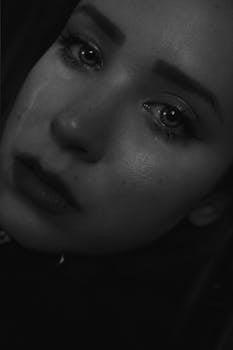
-
By:
- elizabeth
- No comment
the crying of lot 49 pdf
Overview of “The Crying of Lot 49”
Thomas Pynchon’s “The Crying of Lot 49” is a postmodern novel, often described as satire. It centers on Oedipa Maas, a housewife entangled in a potential international conspiracy after being named co-executor of a wealthy ex-lover’s estate.

Main Characters
The central character is Oedipa Maas, a housewife. Pierce Inverarity, her deceased ex-lover, triggers the plot. Other characters interact with Oedipa as she investigates Inverarity’s estate and uncovers a possible conspiracy.
Oedipa Maas
Oedipa Maas is the protagonist of Thomas Pynchon’s “The Crying of Lot 49.” She is a young, married housewife living in Kinneret, California. Her life takes an unexpected turn when she is named the co-executor of the estate of her former lover, Pierce Inverarity. This role thrusts her into a complex web of mysteries and potential conspiracies.
Oedipa’s journey is characterized by her attempts to decipher the meaning behind the strange symbols and messages she encounters while investigating Inverarity’s affairs. She grapples with feelings of isolation and paranoia as she delves deeper into the secrets of the Trystero, a clandestine postal system.
Her character embodies the themes of uncertainty and the search for meaning in a chaotic world. Oedipa’s quest can be seen as a reflection of the postmodern condition, where truth is elusive and reality is subjective. Ultimately, she is left questioning the nature of reality and her own sanity.
Plot Summary
“The Crying of Lot 49” follows Oedipa Maas as she executes the will of Pierce Inverarity. This leads her to discover a hidden, underground postal system and a potential vast conspiracy.
Oedipa’s Initial Task
Oedipa Maas, a California housewife, finds her ordinary life upended when she is named the co-executor of the vast estate of her former lover, Pierce Inverarity. This unexpected responsibility thrusts her into a world far removed from Tupperware parties and suburban routines. Her initial task is seemingly straightforward⁚ to assess and manage Inverarity’s complex assets, a task that quickly proves to be more than she bargained for. She begins to unravel a web of strange and cryptic clues as she begins to look into the business dealings of her ex-lover;
As Oedipa delves deeper into the will’s complexities, she encounters bizarre characters and unsettling situations. The seemingly simple task of settling the estate quickly transforms into a quest for answers, leading her down a rabbit hole of paranoia and uncertainty. Oedipa’s journey is fraught with challenges, forcing her to question her sanity and the nature of reality itself.
Discovery of the Trystero
Oedipa’s investigation into Pierce Inverarity’s estate leads her to the unsettling discovery of the Trystero, a clandestine and ancient postal system operating in the shadows of American society. This discovery throws her perception of reality into chaos, as she finds a hidden network that challenges the established order. The Trystero, with its enigmatic symbols and secretive communication methods, presents Oedipa with a puzzle that seems to have no clear solution.
As she uncovers more about the Trystero’s history and operations, Oedipa becomes increasingly entangled in its web. This discovery transforms her initial task of settling the estate into an all-consuming obsession, as she seeks to understand the true nature of the organization. The more she learns, the more she questions the world around her, unsure if the Trystero is a real conspiracy or a figment of her imagination.

Themes
“The Crying of Lot 49” explores themes of conspiracy, paranoia, communication breakdown, and the use of drugs and alcohol as a means of escaping the dissatisfaction and stagnation of modern life.
Conspiracy and Paranoia
A central theme in “The Crying of Lot 49” is the exploration of conspiracy and the resulting paranoia. Oedipa’s journey is driven by the potential existence of the Trystero, an underground postal system. As Oedipa delves deeper, she encounters symbols, cryptic messages, and unsettling encounters, leading her to question reality itself.
The novel doesn’t definitively confirm or deny the existence of a vast conspiracy. This ambiguity fuels Oedipa’s paranoia and the reader’s uncertainty. Pynchon masterfully blurs the line between genuine discovery and delusional interpretation. Oedipa’s growing suspicion reflects the pervasive sense of unease and distrust present in postwar American society.
Each new piece of evidence, whether real or imagined, deepens her conviction that a hidden network controls events. This theme taps into the anxieties of the Cold War era, where suspicion of hidden enemies and secret plots was rampant, reflecting a broader societal paranoia that Pynchon keenly observes.
Communication and Misinterpretation
“The Crying of Lot 49” highlights the breakdown of effective communication and the prevalence of misinterpretation in modern society. Oedipa’s quest to understand Pierce Inverarity’s will and the potential Trystero network is fraught with failed attempts to connect with others and decipher meaning from fragmented information.
Characters struggle to articulate themselves clearly, and their messages are often distorted or misunderstood by Oedipa and each other. The novel emphasizes the subjective nature of interpretation, showing how personal biases and preconceptions can shape understanding, leading to confusion and uncertainty. The proliferation of symbols, codes, and jargon further complicates communication.
Oedipa faces the challenge of extracting truth from a sea of information, but she is often left questioning her own perceptions. The novel suggests that communication can create further division and isolation, reinforcing the theme of paranoia and the difficulty of establishing genuine connections.
Drugs and Alcohol as Escape
In “The Crying of Lot 49,” drugs and alcohol serve as a recurring motif, representing the characters’ desperate attempts to escape the perceived stagnation and dissatisfaction of their lives. Characters frequently turn to these substances as a means of coping with the overwhelming confusion and uncertainty that permeates their reality. The use of drugs and alcohol can be seen as a temporary reprieve from the complexities of their existence, offering a fleeting sense of oblivion.
Oedipa and other characters use substances to numb themselves to the potential meaning or meaninglessness of the Trystero conspiracy. This escape mechanism highlights the characters’ inability to confront their anxieties directly. The reliance on artificial stimulants underscores their disillusionment with the world and their desire to find solace in altered states of consciousness.
This highlights a theme of a futile attempt to escape reality.

Literary Devices
“The Crying of Lot 49” is recognized for its use of postmodernism. It also employs satire to critique aspects of modern American society, exploring themes of paranoia and the search for meaning.
Postmodernism
“The Crying of Lot 49” is a prime example of postmodern literature, characterized by its fragmented narrative, metafictional elements, and questioning of grand narratives. Pynchon employs these techniques to create a sense of uncertainty and ambiguity, mirroring the protagonist Oedipa Maas’s own confusion as she navigates a world of potential conspiracies and hidden meanings. The novel challenges traditional notions of truth and reality, suggesting that meaning is subjective and constructed.
The text revels in self-awareness, frequently reminding the reader of its fictional nature, and blurring the lines between reality and simulation. This is evident in Oedipa’s journey, where messages are generated through simulations creating a multilayered narrative. The lack of resolution contributes to the postmodern aesthetic, leaving the reader to question the nature of Oedipa’s experience and the reality she perceives.
Satire
“The Crying of Lot 49” functions as a sharp satire of modern America, targeting various aspects of society, including consumerism, paranoia, and the search for meaning in a seemingly meaningless world. Pynchon uses humor and exaggeration to critique these societal ills, often presenting them through absurd and exaggerated scenarios. The novel mocks the tendency towards conspiracy theories and the human desire to find hidden patterns and connections, even where none may exist;
The characters themselves are often caricatures, representing different facets of American culture and its discontents. Through their interactions and experiences, Pynchon exposes the absurdity and superficiality of contemporary life. The novel blends elements of post-noir burlesque with trashy cultural patterns to create a critical social commentary.
Critical Reception and Analysis
“The Crying of Lot 49” has garnered significant attention from critics and scholars since its publication. It is often recognized as a key work of postmodern literature, admired for its complexity, humor, and insightful commentary on American society. Critics have explored the novel’s themes of paranoia, communication breakdown, and the search for meaning in a fragmented world.
Some interpretations focus on the ambiguity of the narrative, questioning whether the Trystero conspiracy is real or a product of Oedipa’s imagination. Others analyze the novel’s use of literary devices, such as satire and irony, to critique societal norms and power structures. The novel’s open-ended conclusion has also been a subject of much debate, prompting discussions about the nature of truth and interpretation.

Influence and Legacy
“The Crying of Lot 49” has exerted a considerable influence on subsequent literature and culture. As a seminal work of postmodernism, it has inspired numerous writers to experiment with narrative structure, character development, and thematic complexity. The novel’s exploration of conspiracy theories and alternative realities has resonated with readers and artists interested in questioning established narratives.
The novel’s themes of social alienation and the search for meaning have also proven to be enduringly relevant, influencing works that examine similar issues in contemporary society. Pynchon’s unique writing style, characterized by its dense prose and playful use of language, has also been widely admired and imitated. “The Crying of Lot 49” continues to be studied and appreciated for its literary innovation and cultural significance.